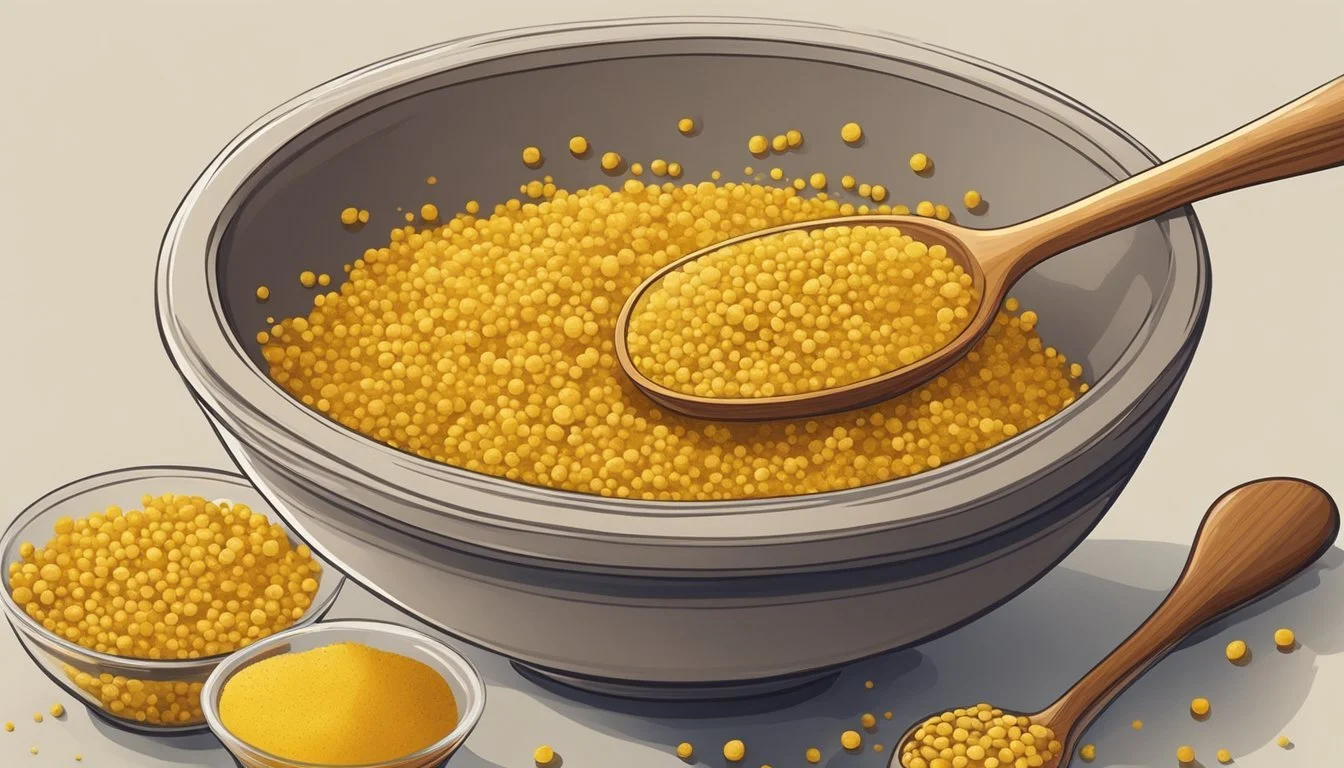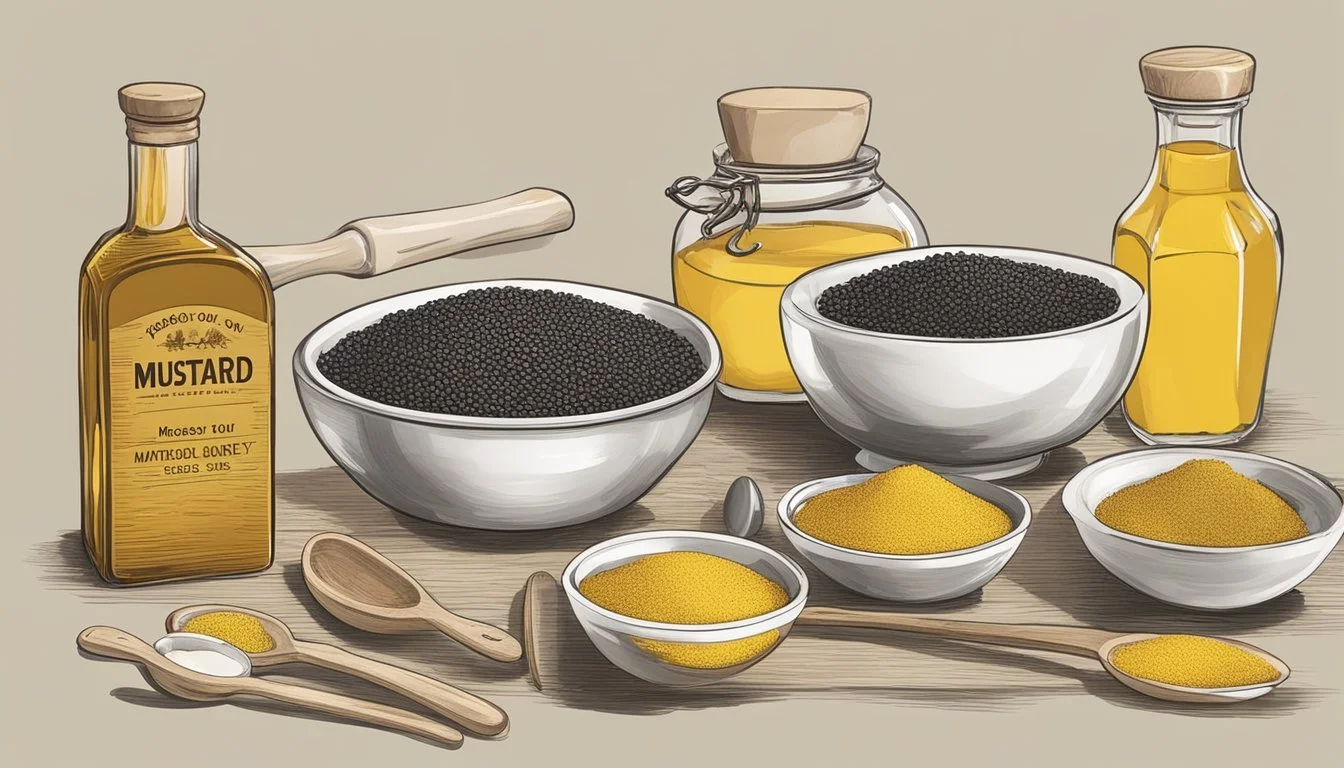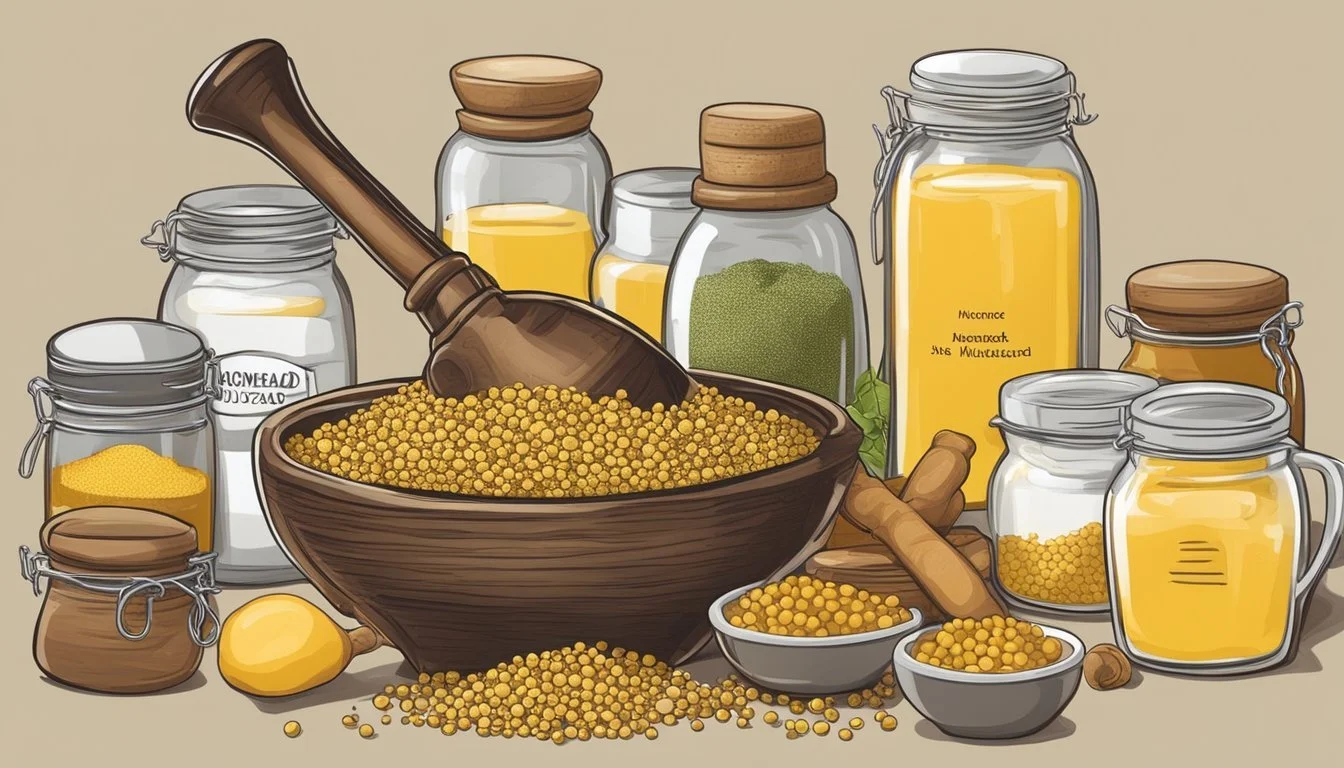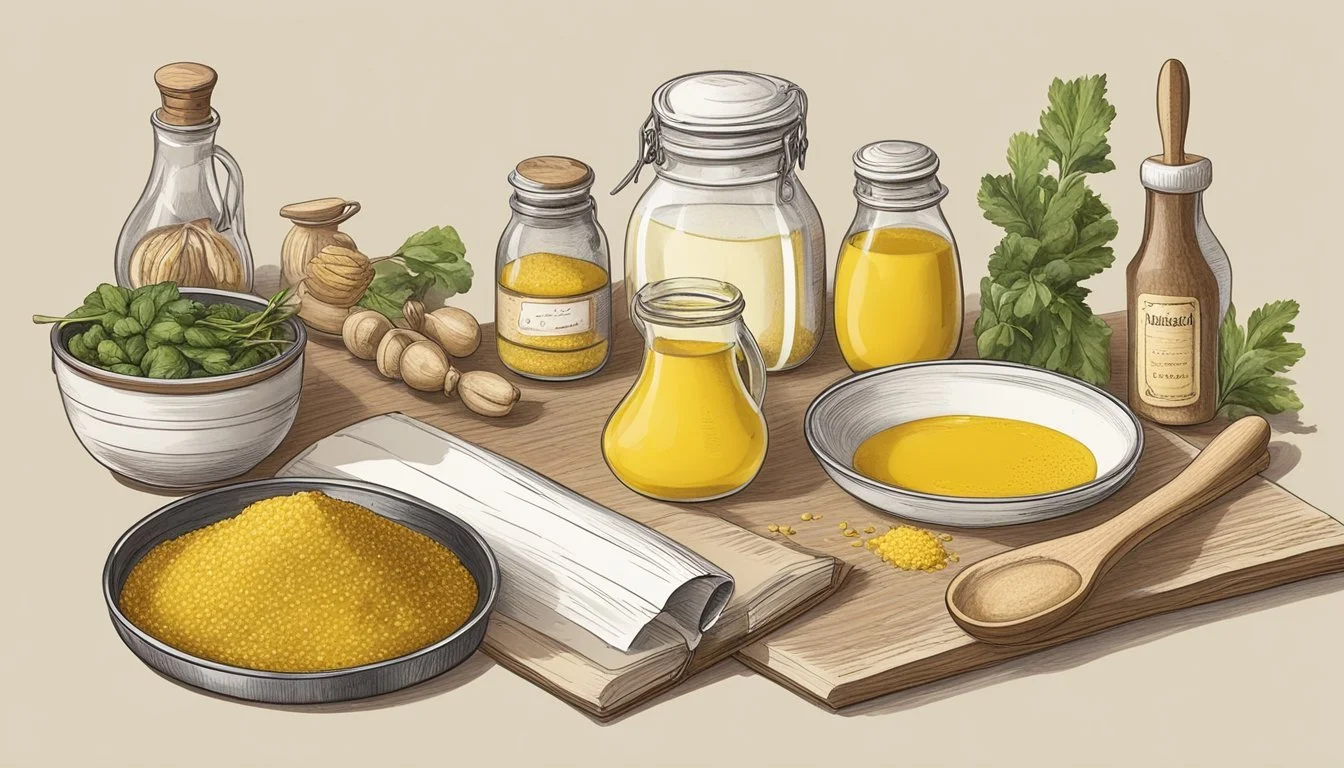How to Make Your Own Mustard from Scratch
A Step-by-Step Guide
Creating homemade mustard is a simple culinary project that any enthusiast can undertake to add a signature flair to their condiments collection. Mustard, one of the most versatile and globally cherished condiments, can be tailored to an array of tastes, ranging from delightfully tangy to intensely spicy. The process harnesses basic ingredients like mustard seeds, vinegar, and a choice of herbs and spices to craft a sauce that elevates even the most ordinary dishes.
The journey of making mustard from scratch begins with the selection of mustard seeds. These seeds are available in various types, such as yellow (white), brown, and black, each bringing a distinct level of heat and complexity to the final product. To start, the seeds are often soaked to soften them, making it easier to achieve the desired texture, whether it's smooth or grainy with intact seeds for added crunch.
As with many do-it-yourself kitchen endeavors, crafting homemade mustard allows for complete control over the final taste and consistency. Adding ingredients such as honey, herbs, garlic, or even beer can transform a basic mustard into a gourmet creation. Mustard also benefits from aging, where letting it sit in the fridge for a couple of days to a few weeks can help mellow and meld the flavors, resulting in a more harmonious and mature condiment.
Understanding Mustard Varieties
When creating homemade mustard, it's important to choose the right type of mustard seeds as the base. Each variety—yellow, brown, and black—offers a distinct flavor profile and heat level that can define the mustard's character.
Yellow Mustard Seeds
Yellow mustard seeds, also known as white mustard seeds, are the mildest in flavor and are what most people recognize in classic American yellow mustard. Their inherent mildness works well for creating a base in homemade yellow mustard recipes, allowing for a smooth taste with a touch of tanginess.
Brown Mustard Seeds
Brown mustard seeds fall in the middle of the mustard scale in terms of heat and pungency. They're typically used in Dijon mustard and spicy brown mustards. When brown seeds are soaked and blended, they impart a flavor that's more intense than yellow seeds but less spicy than black seeds, which can be perfect for those looking for a balance in their homemade mustard.
Black Mustard Seeds
The most pungent and heating of all mustard seeds are the black mustard seeds. These seeds are often used in Indian cooking and in creating mustards with a powerful kick. Homemade mustards made with black mustard seeds will be notably hotter and more complex in flavor, appealing to those who appreciate a robust and fiery condiment.
Essential Ingredients
Creating homemade mustard involves selecting quality ingredients to achieve the desired taste and texture. Each component, from the type of vinegar to the spices and herbs, plays a crucial role in flavor development.
Selecting a Vinegar
Vinegar is the acidic backbone of most mustards, providing tartness and preserving the condiment. One can choose from a range of vinegars:
White Vinegar: A clear choice for a neutral, tart flavor.
Apple Cider Vinegar: Adds a fruity twist and mild sweetness.
Wine Vinegar: Elevates the mustard with complex, robust notes.
Choosing the Right Salt and Sugar
Salt is essential for flavor, while sugar balances the mustard's acidity:
Salt: Use a fine-grain variety to ensure it dissolves well.
Sugar: Regular granulated sugar offers sweetness, or one can opt for honey to add a different sweet profile.
Adding Flavor with Spices and Herbs
Spices and herbs infuse mustards with a range of flavors from sweet to spicy:
Turmeric: Introduces a bright color and earthy taste.
Peppercorns: Bring a spicy kick.
Herbs: Such as thyme, can add depth to the mustard's flavor profile.
Alternatives to Water in Mustard Making
Water can be replaced with other liquids to alter the mustard's consistency and taste:
Ale or Beer: Infuse mustard with complex, malty flavors suitable for a robust profile.
Fruit Juice: Adds a fruity sweetness, perfect for creating a less traditional mustard.
The Mustard Making Process
Making mustard at home is a straightforward process that involves selecting quality mustard seeds, adding complementary ingredients, and applying the right cooking techniques to achieve the desired flavor and texture.
Preparing the Mustard Seeds
Mustard begins with the seeds: yellow, brown, or black. The grinding of the seeds can determine the final texture of the mustard. For a smoother consistency, one should grind seeds finely using a mortar and pestle or a spice grinder. If a coarse, more textured mustard is preferred, the seeds should be partially ground, creating a chunkier mix.
Mixing the Ingredients
Once the mustard seeds are prepared, they are combined with additional dry ingredients like salt and spices. The mixture usually includes an acid such as vinegar or lemon juice. It can be whisked together in a mixing bowl, ensuring the ingredients are well-incorporated. Optional elements like honey, herbs, or wine can be added for flavor complexity.
The Role of Acid in Mustard Making
The incorporation of an acid is crucial not only for flavor but also for its preservative qualities and its role in the chemical reaction that intensifies the mustard's pungency. Acidic components like vinegar or lemon juice interact with compounds in the mustard seeds, enhancing the condiment's heat while also stabilizing and preserving the mixture.
Cooking Techniques for Mustard
For cooking, one may use a double boiler or a small saucepan placed over simmering water to heat the mixture. This gentle heat allows the ingredients to thicken, melding flavors while preventing the eggs, if used, from scrambling. Cooking is not always required, but when done, it should be approached with care to avoid altering the desired flavor profile of the homemade mustard.
Flavor Customization
Customizing the flavor profile of homemade mustard allows for endless possibilities, whether one prefers sweet, spicy, or a combination of both. Here are specific suggestions to tailor the mustard to one's taste.
Creating Sweet and Spicy Mustard Flavors
To create a sweet and spicy balance in mustard, honey is a popular choice for sweetness, complementing the natural pungency of the mustard seeds. One can start with adding a tablespoon of honey to the blend for a milder sweetness or increase the amount for a more pronounced honey mustard. For heat, options like cayenne pepper and Tabasco sauce can be incrementally added. The key is to mix small amounts and taste frequently, to ensure the flavors balance well. Below is a suggested starting point for proportions:
Sweetness:
Honey: 1 tablespoon (adjust to taste)
Spiciness:
Cayenne pepper: 1/4 teaspoon OR
Tabasco sauce: few drops to start
Incorporating Unique Ingredients
When it comes to adding unique flavors, one's imagination is the limit. Ingredients like horseradish can be stirred in for a robust, fiery kick. Fruit purees, such as mango or apricot, can be used for a fruity twist. Lemon zest can provide a bright citrus note, while incorporation of garlic powder can add a savory depth. Here is a simple guide to consider for quantities, ensuring each addition is done to taste:
Fruit Flavors (purees or zests): 1-2 tablespoons
Horseradish: 1 teaspoon (grated)
Lemon (zest only): 1 teaspoon
Garlic Powder: 1/4 teaspoon (or to taste)
By carefully selecting additions and blending them into the mustard, one can create a condiment that's not only homemade but tailored to the precise flavor preferences of its creator.
Mustard Storage and Shelf Life
After crafting homemade mustard, ensuring its freshness and flavor over time is essential. Proper storage involves utilizing a refrigerator and airtight containers to maximize shelf life.
Best Practices for Storing Homemade Mustard
One should store homemade mustard in the refrigerator to maintain its quality. Using an airtight container is crucial to prevent contamination and the introduction of unwanted odors. Glass jars with tight-fitting lids are ideal for this purpose. A cool, consistent temperature helps retain the mustard's pungency and prevents spoilage.
Determining Homemade Mustard's Lifespan
Homemade mustard typically lasts for up to a month when stored correctly in the refrigerator. The product's lifespan may vary depending on the ingredients and preparation method. Vinegar, as a natural preservative, can extend its freshness, and one should always check for signs of spoilage before use.
Mustard Applications
Mustard is versatile in the kitchen, known for its use as a tangy accompaniment to dishes as well as a key ingredient in various recipes. Here is how mustard can elevate different foods.
Mustard as a Condiment
Mustard, in its many forms, serves as a dynamic condiment. A homemade mustard can enhance simple snacks such as hot dogs and pretzels, bringing out their savory flavors. It is equally at home spread on a sandwich or as a unique addition to homemade ketchup for a more complex dipping sauce.
Cooking with Mustard: Marinades and Dressings
Mustard's tangy zing makes it an essential component in marinades and dressings. As a marinade, it tenderizes meat and infuses it with flavor, whether one is grilling chicken or roasting pork. In dressings, mustard emulsifies ingredients, binding oil and vinegar together for a consistent texture, ideal for salads and vegetable dishes.
Mustard in Baking and Recipes
Beyond its role as a condiment and in savories, mustard can be incorporated into baking and other recipes. One might find it added to bread dough for a subtle kick or used within a cheese sauce to complement textures and flavors. Mustard's inclusion in various recipes underlines its adaptability and capability to both stand out and support a dish's main elements.
Troubleshooting Common Mustard-Making Issues
Making your own mustard allows for creative experimentation, but sometimes issues arise with bitterness and consistency. Knowing how to address these common problems will ensure a more enjoyable homemade mustard.
Addressing Mustard Bitterness
If a homemade mustard is too bitter, adjusting the acid balance is key. Mustard's bitterness can often be mitigated by adding a touch of sweetness. Home cooks might consider incorporating a small amount of honey or sugar, tasting as they go to achieve the desired flavor balance. Additionally, letting the mustard sit in the refrigerator for a couple of days before using it can significantly reduce bitterness, as it allows the flavors to mellow.
Fixing Consistency Problems
When the mustard's consistency is not as expected—either too thick or too thin—there are a few simple fixes:
If the mustard is too thick, gradually add a liquid such as water, vinegar, or even a flavor-infused liquid, one tablespoon at a time, blending after each addition until reaching the perfect thickness.
Conversely, a mustard that is too thin might need more dry mustard powder to thicken it up. Adding the powder in small increments and mixing thoroughly will help achieve a creamier texture.
Cooking mustard on a double boiler can aid in achieving a thicker consistency. Heat it with constant stirring to avoid clumping or burning until the desired thickness is reached.
By incorporating these adjustments, one can tailor the consistency and taste of their homemade mustard to their preference.
Tools and Equipment
When embarking on the journey of making mustard from scratch, one's success hinges on the proper selection and use of tools and equipment. Specific utensils and appliances ensure not only ease of preparation but also influence the final flavor and texture.
Selecting the Right Whisk and Mixing Bowls
A durable whisk is essential in combining the mustard ingredients seamlessly without lumps. Stainless steel or silicone whisks work best as they do not react with the acidic components such as vinegar. As for mixing bowls, options include glass or ceramic, avoiding aluminum which may react adversely with acidic ingredients.
Using a Spice Grinder for Freshness
For those opting to use whole mustard seeds, a spice grinder is vital for achieving the desired consistency and unlocking the seeds' pungent flavor. Freshly ground mustard seeds provide a zest that pre-ground mustard powder cannot match. One should pulse the seeds to the preferred coarseness, as this will affect the mustard's final texture.
Appropriate Cookware for Mustard Making
Should the recipe call for a cooked mustard variation, one will require a double boiler or a small saucepan with a heatproof bowl. These provide indirect, gentle heat which is essential when incorporating ingredients such as eggs, preventing them from curdling while the mustard thickens. Cookware materials should be non-reactive, such as stainless steel, to avoid any unwanted chemical reactions with the mustard mixture.
Comparison: Homemade vs. Store-Bought Mustard
When considering homemade mustard versus its store-bought counterpart, one major difference lies in the ingredients. Homemade mustard typically contains fewer and more natural ingredients, providing a clearer flavor profile. Store-bought mustards may include preservatives and additives for longer shelf life.
Taste Variation: Homemade mustards offer a fresh taste, which can be adjusted to personal preference. Store-bought versions are consistent in flavor, which some customers may prefer for familiarity.
Texture: The texture in homemade mustard can be customized by grinding the mustard seeds coarsely or finely. In contrast, store-bought mustards usually have a uniform texture.
Cost & Time: While store-bought mustard is convenient and readily available in any grocery store, making mustard at home can be cost-effective, especially if buying seeds in bulk. However, the process of making homemade mustard requires time and effort.
Shelf Life: Homemade yellow mustard, lacking preservatives, has a shorter shelf life and needs to be refrigerated. Store-bought mustard, with added stabilizers, can last longer in the pantry.
In a nutshell, opting for homemade mustard means embracing a custom, potentially healthier condiment experience, albeit with a shorter lifespan and a bit more work. Store-bought mustard provides consistency, convenience, and longevity, which can be advantageous for many consumers.
Innovative Mustard Recipes and Ideas
When creating homemade mustard, the potential for innovation is vast. One can tailor the flavor, texture, and heat level to their preference or experiment with unique additions for an original twist. Below are some ideas to inspire mustard enthusiasts to craft their bespoke condiments, usable as dressings or marinades.
Sweet and Spicy Mustard:
By adding honey or maple syrup and a dash of chili flakes to the basic mustard recipe, you achieve a delightful balance of sweet heat perfect for glazes and BBQ marinades.
Herb-Infused Mustard:
Incorporate finely chopped herbs such as thyme, rosemary, or basil into your mustard mix. This adds an aromatic dimension that pairs wonderfully with dressings and vinaigrettes.
Fruit Mustard:
Pureed fruits like raspberries or blackberries can be blended with the mustard for a fruity and tangy profile, making an excellent accompaniment to cheeses and sandwiches.
Mustard Variants Table:
Type Ingredients Best Used As Classic Yellow Turmeric, sugar, vinegar Sandwich spread Dijon-Style White wine, garlic, onion Vinaigrette base Beer Mustard Stout or ale, brown sugar Meat marinade Horseradish Fresh horseradish, cream Roast beef condiment
With each variation, remember the importance of balance. The right ratio of vinegar to seeds will ensure that the mustard maintains its characteristic tang without overwhelming the other flavors you introduce. Enjoy the diversity of homemade mustard recipes by exploring these culinary creations.
Enhancing Your Homemade Mustard with Additional Ingredients
When one decides to enhance their homemade mustard, the inclusion of specific sweeteners and spices, as well as herbs and aromatic agents, can significantly alter and improve the flavor profile of the final product.
Incorporating Sweeteners and Spices
Sweeteners can mellow out the sharpness of mustard, providing a more rounded flavor. Common sweeteners include:
Honey: for a natural, floral sweetness
Sugar: for a simple, clean sweetness
A variety of spices can also be introduced to add heat or complexity. These might include:
Turmeric: adds color and a warm, peppery taste
Paprika: brings smokiness and a touch of heat
Using Herbs and Aromatic Agents
The use of herbs and other aromatics can impart a fresh, earthy tone to homemade mustard. They should be used judiciously to complement the mustard's intrinsic taste rather than overwhelm it. Popular choices are:
Dill: for a tangy, slightly sweet flavor
Tarragon: offers a subtle anise-like quality
One can also explore the use of aromatics such as garlic or shallots to create a deeper, more complex flavor profile in their mustard. These ingredients can introduce new layers of taste that can make a homemade mustard truly unique.
The Health Benefits of Homemade Mustard
Homemade mustard offers several health benefits, primarily due to the control over ingredients and the freshness of the preparation. By making mustard from scratch, individuals can avoid preservatives and additives commonly found in commercial brands.
Nutrient-Rich: Mustard seeds, the main ingredient in mustard, are a good source of omega-3 fatty acids, manganese, phosphorus, copper, and vitamin B1.
Antioxidants: Fresh mustard contains antioxidants which are compounds that help protect the body's cells against oxidative stress.
Low Calories: Homemade mustard can be made with minimal or no added sugar, resulting in a condiment that is low in calories.
Dietary Control:
Reduced Sodium: Customizing homemade mustard allows for the reduction of salt, beneficial for those monitoring sodium intake.
No Preservatives: Homemade mustard does not require preservatives, which caters to those seeking a more natural diet.
Versatile Flavors: By adjusting the types of mustard seeds and the choice of vinegar or other liquids, one can create flavors ranging from mild to spicy, catering to individual tastes and dietary needs.
In summary, homemade mustard provides health-conscious individuals with a flavorful alternative to store-bought condiments while offering nutritional benefits. Its preparation from scratch ensures the absence of unwanted additives, and the customization options make it a versatile addition to a healthy diet.
Final Thoughts on Making Mustard from Scratch
Making mustard from scratch is a rewarding DIY project that allows for complete control over the flavor and ingredients. Home chefs can take pride in creating a condiment that is free from preservatives and tailored to their taste. The process is straightforward and the ingredients are easily accessible, offering an enjoyable experience for both novice and seasoned cooks.
When preparing mustard, one must consider the choice of seeds as a crucial factor. Yellow seeds are milder and more common, while brown and black seeds offer a more intense heat. A mixture of vinegar and water is typically used to unlock the seeds' pungency and is an integral part of the mustard-making process.
The equipment required for making mustard at home can typically be found in most kitchens—a food processor, blender, or mortar and pestle serve well for grinding seeds to the desired consistency. One should not overlook the importance of a good blend, as the texture contributes significantly to the final product.
Here are some key tips in bullet form to ensure success:
Opt for glass or ceramic utensils to avoid any unwanted reactions with ingredients.
Allow the mustard to rest before using it to let flavors fully develop.
Experiment with additional flavors like honey, cloves, or turmeric to customize the mustard.
The freshness of homemade mustard can be preserved in the refrigerator, often lasting up to three weeks in an airtight container.
In making mustard from scratch, individuals gain a greater appreciation for the nuances of this versatile condiment. With practice, they develop their craftsmanship and are able to produce mustard that can enhance a wide array of dishes.
Frequently Asked Questions
Making your own mustard requires patience and experimentation. Vinegar and mustard seeds are foundational, but variations in ingredients and method play a significant role in the final product's flavor and texture.
Can You Make Mustard without Vinegar?
One can replace vinegar with lemon juice, wine, or even beer to give the mustard a unique taste. Acidity is key for both flavor and preservation, so any suitable acid will do.
How Long Should Homemade Mustard Sit Before Using?
Homemade mustard's flavor develops over time. It's advisable to let it sit for at least a week before using, to allow the flavors to meld. Properly stored in an airtight container, homemade mustard can last up to six months.
What Are Some Creative Uses for Leftover Mustard Seeds?
Leftover mustard seeds can be reused creatively in the kitchen. They can be:
Toasted and added to salad dressings or marinades.
Used as a crust for meats or added to breading mixes.
Included in pickling recipes for extra flavor.
How Do You Achieve the Desired Mustard Texture?
Achieving the right mustard texture depends on the processing method:
For a smoother mustard, blend seeds thoroughly.
For a coarser texture, pulse seeds briefly or grind only a portion.
Liquid volume can be adjusted to thin or thicken the consistency.
Is Homemade Mustard Healthier Than Commercial Varieties?
Homemade mustard can be healthier than store-bought versions which might contain preservatives or additives. Control over ingredients allows for healthier choices, like using organic mustard seeds or natural sweeteners.
Conclusion
Creating homemade mustard is a process that allows for a unique and personal touch in your condiments. A variety of recipes cater to different taste preferences, ranging from mild to spicy.
Key takeaways for crafting that perfect batch of mustard:
Quality of Ingredients: Select high-quality mustard seeds or powder for the best flavor.
Preparation: Clean utensils ensure the mustard flavor is not compromised.
Patience during Cooking: The process may take 30-40 minutes, but the result is worth the wait.
Remember, mustard is not only versatile in its uses but also in its creation—experiment with ingredients such as honey, herbs, or different vinegars for diverse flavor profiles. The mustard can be adjusted to suit individual tastes, whether one prefers it smooth or with a bit of texture.
The procedure is straightforward but does require attention, especially when heating, to prevent burning. Stirring often is key.
Storing the mustard in airtight containers helps preserve its pungency and freshness. With proper storage, homemade mustard can enhance dishes for weeks to come.
In embracing the art of mustard making, one contributes to a centuries-old culinary tradition while enjoying a condiment that is freshly made, without the additives found in commercial varieties. Homemade mustard is a flavorful testament to the simplicity and joy of making something from scratch.









